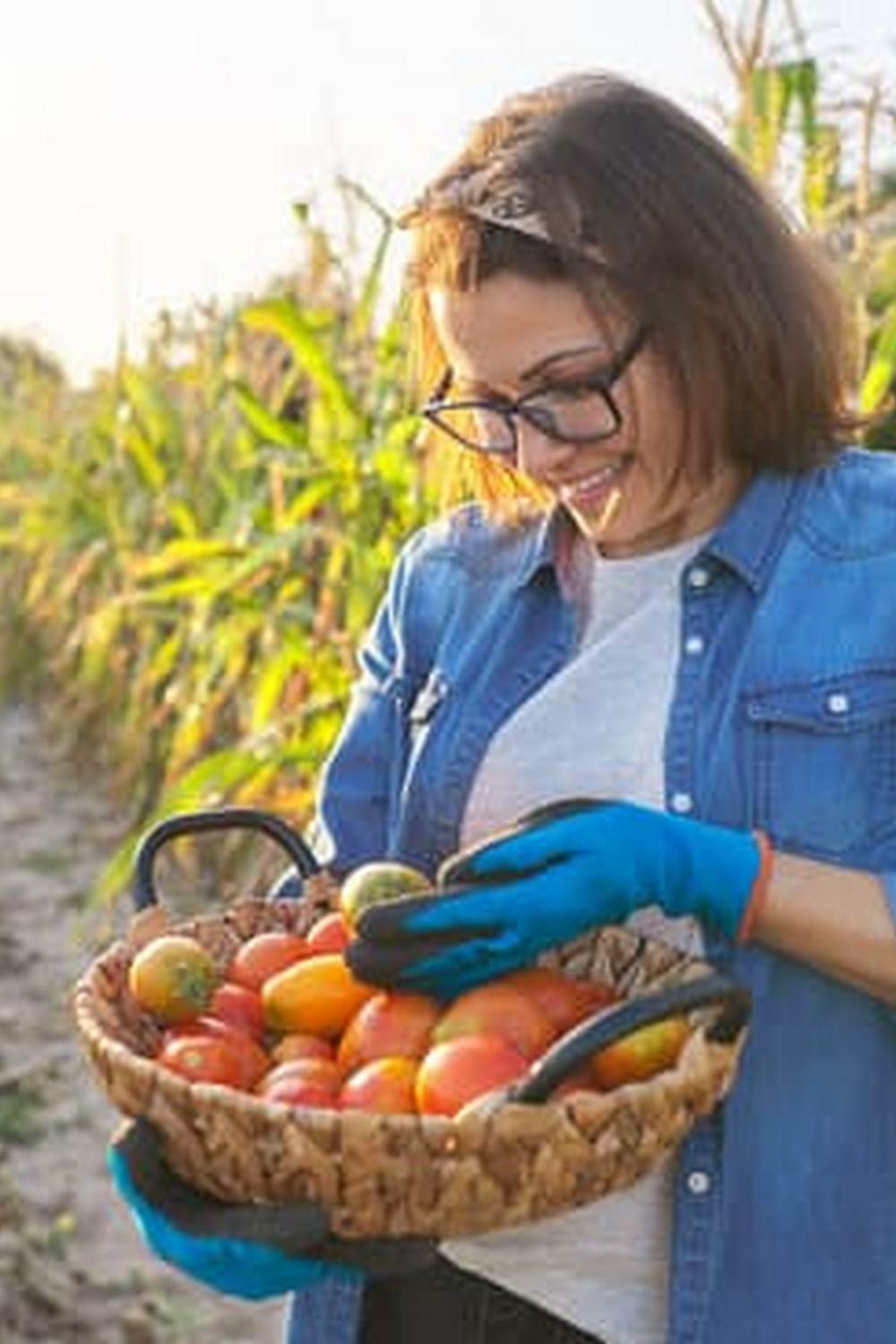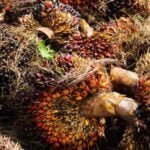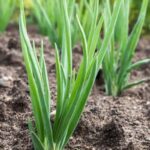Proper watering is essential for the health and success of any vegetable garden. Having the best watering system for vegetable gardens can make a significant difference in maximizing growth and yield. Whether you are a seasoned gardener or just starting out, choosing the right watering system is crucial for ensuring your plants receive the necessary moisture to thrive.
There are various types of watering systems available for vegetable gardens, including drip irrigation, soaker hoses, and sprinkler systems. Each of these systems has its own advantages and considerations when it comes to efficiently delivering water to your plants. Installing a suitable watering system can not only save you time and effort but also promote healthier plant growth by providing consistent moisture levels.
When selecting the best watering system for your vegetable garden, it’s important to consider factors such as water efficiency, ease of installation, cost-effectiveness, and specific garden needs. By comparing different watering systems and their suitability for your garden setup, you can make an informed decision that will benefit your plants in the long run. Stay tuned to explore the benefits of installing a customized watering system that fits your vegetable garden perfectly.
Types of Watering Systems Available for Vegetable Gardens
Proper watering is essential for the health and productivity of a vegetable garden. There are several types of watering systems available that can help ensure your plants receive the right amount of water at the right time. Choosing the best watering system for your vegetable garden is crucial in promoting optimal growth and yield.
Here are some popular types of watering systems commonly used in vegetable gardens:
- Drip Irrigation: This system delivers water directly to the roots of the plants through a network of tubes or pipes with emitters. This method conserves water by minimizing evaporation and runoff.
- Soaker Hoses: Soaker hoses are porous hoses that release water along their length, providing slow, deep watering to plants. They are effective in reducing water waste compared to overhead sprinklers.
- Sprinkler Systems: Sprinklers distribute water over a large area through a network of pipes and nozzles. While they may not be as efficient as drip irrigation or soaker hoses, they can cover a larger area quickly.
Each type of watering system has its own advantages and considerations, so it is important to assess your garden’s specific needs before making a decision. Factors such as garden size, plant type, soil type, and climate should be taken into account when choosing the best watering system for your vegetable garden.
Installing a proper watering system can bring numerous benefits to your vegetable garden. Not only does it provide consistent moisture to your plants, but it also helps reduce water waste, prevent disease by avoiding wet foliage, and save you time and effort in manual watering. By selecting the best watering system suited for your garden’s needs, you can ensure healthy growth and bountiful harvests throughout the growing season.
Benefits of Installing a Watering System for Your Vegetable Garden
Consistent and Efficient Watering
One of the major benefits of installing a watering system for your vegetable garden is the ability to provide consistent and efficient watering to your plants. With traditional methods such as hand-watering or using a hose, it can be challenging to ensure that each plant receives the right amount of water. A watering system eliminates this guesswork by delivering the precise amount of water directly to the roots of your plants, helping them thrive and grow healthily.
Water Conservation
Another advantage of using a watering system for your vegetable garden is water conservation. By using a targeted watering system like drip irrigation or soaker hoses, you can minimize water waste by delivering water directly where it is needed most – at the root zone of your plants. This not only helps reduce water usage but also prevents unnecessary evaporation and runoff, making your gardening practices more environmentally friendly.
Time-Saving
Installing a watering system in your vegetable garden can also save you time and effort in the long run. Once set up, a watering system can operate on a timer, allowing you to automate the process of watering your garden.
This means less time spent manually watering each plant, giving you more time to focus on other important tasks in your garden. Additionally, with proper maintenance and care, a well-installed watering system can last for years, providing long-term convenience for your gardening needs.
Factors to Consider When Choosing the Best Watering System for Your Vegetable Garden
When it comes to choosing the best watering system for your vegetable garden, there are several factors that you need to consider in order to make the right decision. By taking these aspects into account, you can ensure that your garden receives adequate water without wasting this precious resource. Here are some key factors to think about:
- Watering Needs: Consider the specific watering requirements of the vegetables in your garden. Some plants may need more water than others, so choose a system that allows for flexibility in watering frequency and volume.
- Budget: Determine how much you are willing to invest in a watering system for your vegetable garden. Different systems come at varying price points, so it’s important to select one that fits within your budget constraints.
- Time and Maintenance: Think about how much time you can dedicate to maintaining the watering system. Some systems may require more frequent checks and adjustments, while others are more hands-off.
Moreover, it is essential to consider the layout and size of your vegetable garden when selecting a watering system. Take into account factors such as the distance between beds, the terrain of your garden, and any obstacles that may affect water distribution. By assessing these aspects beforehand, you can choose a system that is tailored to meet the specific needs of your garden.
Lastly, consider environmental factors such as local climate conditions and water availability when deciding on a watering system. Opt for a system that is sustainable and efficient in its use of water resources, especially during periods of drought or water restrictions. By selecting a watering system that aligns with these factors, you can ensure optimal growth and productivity in your vegetable garden while minimizing waste.
With these considerations in mind, you can make an informed decision on the best watering system for your vegetable garden. Whether you opt for drip irrigation, soaker hoses, or sprinkler systems, choosing the right system will help maintain healthy plants and bountiful harvests throughout the growing season.
Comparison of Different Watering Systems
When it comes to choosing the best watering system for your vegetable garden, it’s important to consider the different options available and their specific benefits. The three main types of watering systems commonly used in vegetable gardens are drip irrigation, soaker hoses, and sprinkler systems. Each of these systems has its advantages and can be suitable for different garden setups and needs.
Drip Irrigation
Drip irrigation is a popular choice among gardeners for its efficiency in delivering water directly to the plant roots. This system conserves water by minimizing evaporation and runoff, making it an environmentally friendly option. Drip irrigation also helps prevent common issues such as leaf diseases that can result from overhead watering. Additionally, this system allows for precise control over the amount of water each plant receives, promoting healthier growth.
Soaker Hoses
Soaker hoses are another excellent option for watering vegetable gardens. These hoses have tiny pores that allow water to seep out slowly along their length, providing a gentle and even distribution of water to the root zones. Soaker hoses are easy to install and can be adjusted to fit different garden layouts. They are particularly useful for areas with dense planting or uneven terrain where traditional sprinklers may not reach effectively.
Sprinkler Systems
Sprinkler systems are a convenient choice for larger vegetable gardens or when overhead watering is preferred. These systems use a network of pipes with attached nozzles to spray water over the plants in a wide area.
Sprinklers come in various types, such as oscillating, stationary, or rotating sprinklers, each designed for specific coverage needs. While sprinkler systems may not be as water-efficient as drip irrigation or soaker hoses, they can still provide adequate moisture for healthy plant growth when properly managed.
Overall, the best watering system for your vegetable garden will depend on factors such as garden size, layout, and personal preferences in terms of water conservation and ease of use. Consider these aspects when comparing drip irrigation, soaker hoses, and sprinkler systems to determine which option is most suitable for maximizing growth and yield in your vegetable garden.
Installation and Maintenance Tips for Your Chosen Watering System
Proper installation and maintenance of your chosen watering system is crucial to ensure that your vegetable garden receives the right amount of water at the right time. Whether you opt for a drip irrigation system, soaker hoses, or sprinkler system, following these tips will help you get the most out of your watering setup.
When installing a drip irrigation system, make sure to place the tubing close to the base of plants to deliver water directly to the roots. Properly secure the tubing in place using stakes or clips to prevent shifting and potential damage. Regularly check for clogs in emitters and make adjustments as needed to ensure even distribution of water throughout your garden.
For soaker hoses, it’s important to lay them along the base of plants in a zigzag pattern rather than in straight lines. This will help ensure that all areas of your garden receive adequate moisture. Inspect soaker hoses regularly for leaks or damage, and replace any worn-out sections promptly to prevent water wastage.
If you opt for a sprinkler system, position the sprinklers strategically to cover the entire vegetable garden area efficiently. Adjust the angle and range of sprinkler heads as needed based on plant growth and weather conditions. Regularly check for clogged nozzles or malfunctioning parts, and perform routine maintenance such as cleaning filters and adjusting water pressure to optimize performance.
By following these installation and maintenance tips for your chosen watering system, you can help promote healthy plant growth in your vegetable garden while conserving water effectively. Remember that regular upkeep and monitoring are key to maximizing the benefits of any watering system for vegetable gardens.
Best Practices for Watering Your Vegetable Garden to Maximize Growth and Yield
Having the best watering system for vegetable gardens is crucial to ensuring the health and productivity of your plants. One of the most popular options for watering vegetable gardens is drip irrigation. This system delivers water directly to the roots of the plants, minimizing evaporation and water waste.
Drip irrigation can also help prevent diseases by keeping the foliage dry. Another option is soaker hoses, which are porous hoses that release water along their length. This method is efficient and cost-effective, providing consistent moisture to the soil.
Sprinkler systems are another common choice for watering vegetable gardens. These systems spray water over a large area, covering plants evenly. However, it’s important to ensure that the water reaches the roots without wetting the leaves excessively to prevent disease.
When choosing the best watering system for your vegetable garden, consider factors such as the size of your garden, types of vegetables grown, and water source availability. Drip irrigation works well for raised beds or container gardens, while sprinkler systems may be more suitable for larger plots.
Implementing a proper watering schedule is essential for maximizing growth and yield in your vegetable garden. Water in the morning to allow foliage to dry before evening and reduce the risk of disease. Deep watering less frequently encourages plants to develop deep root systems, making them more resilient during periods of drought. Monitoring soil moisture levels regularly and adjusting your watering system accordingly will help maintain optimal conditions for plant growth.
| Watering System | Advantages |
|---|---|
| Drip Irrigation | Direct delivery to roots, minimal waste |
| Soaker Hoses | Cost-effective, consistent moisture |
| Sprinkler Systems | Covers a large area evenly |
Real-Life Examples of Successful Vegetable Gardens Using Different Watering Systems
One excellent example of a successful vegetable garden utilizing the best watering system for vegetable gardens is the Smith family’s backyard garden. The Smiths opted for a drip irrigation system, which allowed them to deliver water directly to the roots of their plants with minimal waste.
By installing a timer on their drip irrigation system, they were able to ensure that their vegetables received consistent moisture levels, resulting in healthier plants and higher yields. The Smiths’ tomato plants thrived with this precise watering method, producing an abundance of ripe, juicy tomatoes throughout the season.
Another impressive example is the Johnson community garden, which implemented a soaker hose watering system. This method delivered water slowly and directly to the base of each plant, preventing evaporation and ensuring that every vegetable received adequate hydration.
As a result, the community garden was able to conserve water while promoting strong root systems and vibrant growth in their crops. The peppers, cucumbers, and zucchinis grown in this garden flourished under the consistent and efficient watering provided by the soaker hose system.
In addition, the Patel rooftop garden serves as a compelling illustration of the benefits of a sprinkler system for vegetable gardens. Despite limited space, the Patels were able to grow a variety of vegetables like lettuce, kale, and carrots with the help of their automated sprinkler system.
This hands-free approach to watering saved them time and effort while ensuring that their plants received proper hydration throughout the day. The even distribution of water from the sprinklers resulted in uniform growth among their vegetables, contributing to a bountiful harvest year after year.
| Vegetable Garden | Watering System |
|---|---|
| Smith Family’s Backyard Garden | Drip Irrigation System |
| Johnson Community Garden | Soaker Hose System |
| Patel Rooftop Garden | Sprinkler System |
Conclusion
In conclusion, choosing the best watering system for your vegetable garden is crucial in ensuring the health and productivity of your plants. By providing the right amount of water at the right time, you can help your vegetables thrive and yield bountiful harvests. Whether you opt for a drip irrigation system, soaker hoses, or a sprinkler system, each type has its own advantages and can be tailored to suit your specific garden needs.
Installing a watering system for your vegetable garden not only saves you time and effort but also helps conserve water by delivering moisture directly to the roots where it is needed most. This targeted approach reduces water waste and minimizes evaporation, ultimately leading to healthier plants. Additionally, incorporating a watering system allows for consistent watering, which is essential for preventing drought stress and promoting optimal growth.
Ultimately, the best watering system for your vegetable garden will depend on factors such as the size of your garden, the types of vegetables you are growing, and your personal preferences. By carefully considering these factors and following installation and maintenance tips specific to your chosen system, you can set yourself up for success in growing a thriving vegetable garden.
Remember that proper watering practices are key to maximizing growth and yield in your garden, so choose a system that works best for you and watch your vegetables flourish.
Frequently Asked Questions
What Is the Best Irrigation System for a Vegetable Garden?
The best irrigation system for a vegetable garden depends on various factors such as the size of the garden, type of vegetables, and climate. Drip irrigation is often recommended as it delivers water directly to the roots, minimizing water waste and reducing the risk of disease.
What Is the Best Way to Water a Raised Vegetable Garden?
The best way to water a raised vegetable garden is to use a soaker hose or drip irrigation system. These methods ensure that water reaches the roots where it is needed most, rather than wasting water on the leaves which can lead to increased evaporation and potential fungal diseases.
What Is the Most Efficient Method of Irrigation for Vegetable Crops?
The most efficient method of irrigation for vegetable crops often involves using drip tape or drip lines. This method delivers water directly to the base of the plants, reducing evaporation and runoff compared to traditional sprinkler systems.
It also helps prevent moisture-related diseases by keeping the foliage dry. Overall, drip irrigation is an effective and efficient way to water vegetable crops while conserving water resources.

If you’re looking to get into vegetable gardening, or are just looking for some tips on how to make your current garden better, then you’ve come to the right place! My name is Ethel and I have been gardening for years. In this blog, I’m going to share with you some of my best tips on how to create a successful vegetable garden.





